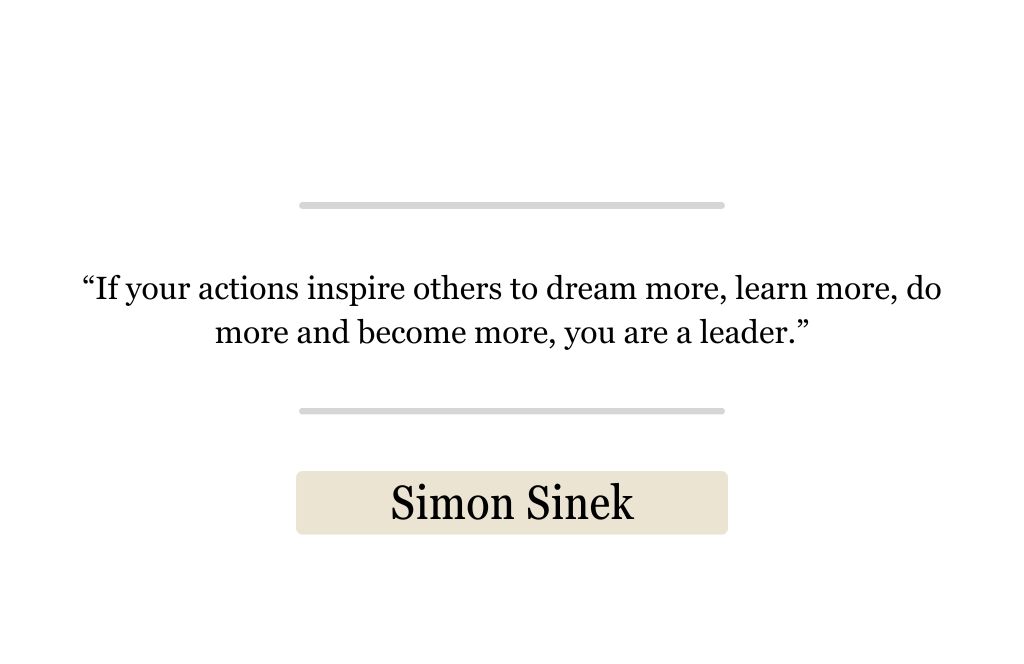If you fear public speaking, you are not alone. Studies have shown that it is a top fear for many people. Imagine overcoming those fears and delivering a speech as memorable as your favorite TED talk. Now, you can.
Public speaking is essential for women who want to break barriers, lead authentically, and inspire change. It is also important for women who want to pitch ideas, land new clients, and empower other women.
Public Speaking 101 is the ultimate guide for businesswomen and female entrepreneurs who want to deliver award-winning speeches and speak better in everyday situations.
Learn from the best: The Top Female Motivational Speakers in 2024
Public Speaking 101: How to Prepare an Impactful Speech
A good talk or presentation should do more than meet a desired criteria or purpose—it should inspire, empower, persuade, and influence others, no matter the subject. Even if you present a talk on recent business figures or propose new business strategies, there is always an opportunity to present meaningfully and tell a story.
These 4 simple strategies will help you prepare a speech that is packed with value, fosters connection, and inspires action.
1. Come Back to Your Why
Simon Sinek, a powerful presenter and TED talker, says the biggest tip for presenting is to begin by asking yourself: Why are you here?

He encourages us to adopt a “givers mentality,” where we try to give value to our audience. Don’t think about what you can get from a conference; think about what you can give – this will make your talk much more compelling, and your audience will reward you by giving their undivided attention, one of the most important currencies in today’s era. Plus, people will trust the speaker and be more prepared to act afterward.
Creating value can be easy. If you share your journey, remember to highlight the lessons learned and how these points can help others. Similarly, if you are promoting a product, don’t talk about the product – talk about the value it can provide. Think about your purpose in every written word.
2. Use Story-telling Techniques
Humans respond to stories because they build intrigue and foster connections.
Stories are also perfect for starting presentations as they can pique curiosity and build trust. A good story can illustrate your point and make people more likely to remember it, but remember to keep it concise and, above all else, relevant.
When using stories, don’t be afraid to be vulnerable and reflect on the most challenging parts of your career or project – these moments are often the most interesting and relatable. Being vulnerable is not a weakness but a strength, especially in public speaking, as it builds trust and fosters connection.
Recommended Reading: 15 Dare to Lead Quotes That Will Change How You Lead
3. Refine Your Message
There is nothing wrong with a long speech if it is well structured. But if it starts to sound long-winded and repetitive, you may want to rethink your speech.
Simple and coherent messages can encourage understanding and interaction. When refining your speech, focus on the introduction and the conclusion, these two important pieces can glue your speech together and act as a guide for the rest of your talk.
4. The Ending is Just as Important as The Introduction
Everyone pays attention to the introduction, but the conclusion does not get the same amount of attention.
Imagine that you have prepared a story to build intrigue, and then toward the end, you lose momentum, end your message arbitrarily, and people quickly forget about your talk. Don’t let this fatal mistake happen to you. Public speaking 101 is that the ending needs to be packed with punch.
Every conclusion should reinforce a paramount point that will make your speech memorable and purpose-driven.
There are multiple ways for you to conclude confidently and make your speech memorable.
You can end your speech by:
- Including a relevant quote.
- Create an accurate analogy.
- Repeat the phrases you used in your introduction, and link your conclusion to the introduction.
- Answer thoughtfully posed questions from your introduction.
Public Speaking 101: How to Deliver an Inspiring Speech

Your speech now has powerful stories, a strong introduction, and a powerful conclusion. Your message is clear and coherent, and your speech drips with purpose. Now, you need to deliver it.
These four tips can help you present yourself professionally and articulate your well-thought-out message.
1. Use Power Poses

Power poses are effective because they influence our hormones, such as testosterone, and reduce cortisol, the stress hormone.
Power poses can also influence body composition, making us feel more confident and ready to tackle even our biggest fear (public speaking). Not only are power poses an effective confidence-building tool for the speaker, but the audience can pick up on visual clues, so be conscious of non-verbal communication.
A lack of confidence is a challenge for female entrepreneurs. Power poses offer more than just a temporary boost of powerful hormones – they are confidence-building exercise.
Power pose expert and author, Amy Cuddy reminds us that, “Tiny tweaks can lead to big changes.”
Here are power poses that you can try before or during your presentations:
- The Peter Pan: place both hands on your hips with your feet apart and your head held high.
- Smile: This simple gesture can boost your mood, help you connect with your audience, and build trust.
- The performer: Stretch your arms out and place your hands in a V above your head like a runner crossing the finish line.
Recommended Reading: 15 Effective Confidence-building Exercises for Women
2. Create a Positive Mindset
Your mindset is arguably the most important factor when giving a speech.
Podcast host and author, Matt Abrahams reminds us that, “Speaking is an opportunity rather than a challenge of threat.”
Instead of dreading your speech, see it as a moment to make an impact and inspire others. If you feel nervous just before you deliver a talk, there are some tricks you can use to settle the nerves and instill confidence in yourself.
Visualization techniques can help us rewire our brains and influence our behavior. Popular advice has told us to imagine the audience in their underwear to downplay the situation and settle our hyperactive nerves. We have a more powerful suggestion—imagine getting a standing ovation after your presentation or the audience clapping and cheering. The second image can help you visualize and work toward success.
- Positive affirmations can also rewire your brain and influence your behavior.
- Try this affirmation: I believe wholeheartedly in my mission, and I want to share it.
- Use techniques like breathing – take a slow inhale and a slower exhale.
Recommended Reading: 20 Affirmations for Female Entrepreneurs.
3. When in Doubt, Pause.
When speaking, use pauses and pace in all the right places. Don’t be afraid to pause meaningfully; this can help the audience reflect on a point and let it sink in.
Pausing can also help you regain control after a shaky moment, pick up on the audience’s response, or regain posture. It can also help create suspense, add unexpected moments, and instill rhythm into your talk – don’t underestimate the simple yet powerful practice of pausing.
4. Practice Makes Perfect
Rehearse your speech diligently. The more you practice, the more confident you will feel, the less you will rely on notes, and the more comfortable you will feel when you deliver your message.
Practice in front of a mirror, record yourself on a tripod, and rewatch the video to refine your story, tone, and message.
Author and public speaker, Scott Berkun says, “Nothing teaches you to speak like speaking.”
What to read next? 14 Women in Business Podcasts That You Need to Download in 2024
What Are The Best Public Speaking Books?
Books can help you become a better public speaker and improve your speaking skills. Luckily public speaking is a skill, so you can improve it. Here are some of the best books for improving your speaking Skills.
Talk Like Ted by Carmine Gallo
After studying thousands of TED talks, Carmine Gallo has synthesized his ideas into 9 pieces of actionable advice for you to follow.
Think Fast Talk Smart by Matt Abrahams
Have you ever been blindsided by a question at work or in an interview, felt your pulse quickening, the negative thoughts intruding, and you freeze? Spontaneous speaking is hard. This is one of the best books for improving your speaking skills as it offers effective strategies to think on the spot and communicate clearly.
Presence by Amy Cuddy
A lot of how we present and communicate ideas depends on our presence, from job interviews to difficult conversations. Cuddy, is famous for her TED Talk on power poses, a confidence-building exercise for women, and talks about how we can live more boldly. Ultimately, Presence can liberate ourselves from fear in high-pressure moments, perform at our best, and connect with others.
Recommended Reading: The 5 Best Books for Improving Speaking Skills plus Their Top Takeaways
Public Speaking 101 FAQs
Can you use public speaking in business?
You use speaking everyday whether it is to make small talk at the coffee station, when delivering speeches, or pitches. You will leave a better impression if you can cohesively communicate your ideas in meetings and through everyday conversations.
Should I put public speaking on my resume?
If you think that public speaking is a strong skill of yours, you should put it on your resume. Public speaking is used in a lot of industries and is a very versatile skill to have (an important one). Especially if the job that you are applying for requires communication and presenting skills. Some jobs that need these skills include sales, managerial, and leadership roles.
How can I become a better public speaker
Start by reframing your mindset and see speaking as an opportunity rather than a threat. Then prepare your speech so that you understand your value, tell a story, and have a strong ending. When presenting remember to breathe deeply, use power poses for women, visualize success, and pause – and embrace imperfection (these are often the best speeches).
What are the 7 Essential Elements of Public Speaking
Before delivering your speech, you should also consider the elements of public speaking. By understanding these crucial components, you can prepare a speech that resonates with your audience and fits the context.
- Feedback
- The Speaker
- The Message
- The Audience
- The Channel
- The Context and Setting
- Timing
Recommended Reading: The 15 Best Careers for Women in 2024 And What Skills You Need
Conclusion: Your Ideas Are Worth Spreading
You now know the secret to effortlessly preparing and delivering an empowering speech appropriate for your audience. Whether you’re co-hosting a podcast, presenting at a business conference, or giving an internal presentation on business development strategies, these are universal strategies and tips for women. Public Speaking 101 will help you set the stage for success and deliver a speech confidently.
Remember, public speaking should not be daunting – it should be seen as an opportunity to share a powerful message or spread ideas. Your ideas matter; we can’t wait for more bold businesswomen and female entrepreneurs to take the stage, spread their ideas, be bold, and inspire action.
What to Read Next? 20 Inspirational Podcasts for Women That Will Motivate And Empower You








![Did you know Beyoncé is this close to billionaire status? 💸 Her net worth is estimated at $800 million—and climbing. She’s the most awarded and nominated artist in Grammy history. But she’s not just making music. As the founder of @parkwood, she built a creative empire for her music, films, and cultural projects. And now, she’s entered the spirits game with her own whiskey brand, @sirdavis. 🥃 One of the most powerful Black female entrepreneurs of our time—and one of the best-selling artists ever.
✨ Read her full journey → [link in bio] #BusinessWomen #Beyonce #NetWorth #Parkwood #SirDavis #WomenInMusic #BlackExcellence #FemaleEntrepreneurs #BoldMoves #FromStageToCEO #WomenWhoLead Did you know Beyoncé is this close to billionaire status? 💸 Her net worth is estimated at $800 million—and climbing. She’s the most awarded and nominated artist in Grammy history. But she’s not just making music. As the founder of @parkwood, she built a creative empire for her music, films, and cultural projects. And now, she’s entered the spirits game with her own whiskey brand, @sirdavis. 🥃 One of the most powerful Black female entrepreneurs of our time—and one of the best-selling artists ever.
✨ Read her full journey → [link in bio] #BusinessWomen #Beyonce #NetWorth #Parkwood #SirDavis #WomenInMusic #BlackExcellence #FemaleEntrepreneurs #BoldMoves #FromStageToCEO #WomenWhoLead](https://scontent-ord5-3.cdninstagram.com/v/t39.30808-6/495255594_122184586070306459_2350172612755558244_n.jpg?stp=dst-jpg_e35_tt6&_nc_cat=106&ccb=7-5&_nc_sid=18de74&_nc_ohc=w1AuHJ5xE2kQ7kNvwFd2IZs&_nc_oc=AdmbBCQan5fBOztycyzbE_f_PpjuDFGW-b-FkFDHZk3Sh55k1nezAO2pYARB9RHepwA&_nc_zt=23&_nc_ht=scontent-ord5-3.cdninstagram.com&edm=ANo9K5cEAAAA&_nc_gid=8DVlV4tPY0WKSv4P9VUvRw&oh=00_AfIkAauHFpnbSntsZDNg1MclyNhLDzSM9Qwn0U1idFM1dA&oe=68237087)

![@amygriffin is betting on women. She is a powerhouse in venture capital, known for backing bold, female-led brands and reshaping the consumer landscape. She founded @g9_ventures that has backed stand-out brands like @bumble, @goop, and @hellosunshine. She’s also the best-selling author of The Tell—an Oprah’s Book Club pick. 📚 ✨ Learn more about Amy → [link in bio] #AmyGriffin #G9Ventures #FemaleInvestors #BoldLeadership #WomenWhoInvest #VentureCapital #WomenBackingWomen @amygriffin is betting on women. She is a powerhouse in venture capital, known for backing bold, female-led brands and reshaping the consumer landscape. She founded @g9_ventures that has backed stand-out brands like @bumble, @goop, and @hellosunshine. She’s also the best-selling author of The Tell—an Oprah’s Book Club pick. 📚 ✨ Learn more about Amy → [link in bio] #AmyGriffin #G9Ventures #FemaleInvestors #BoldLeadership #WomenWhoInvest #VentureCapital #WomenBackingWomen](https://scontent-ord5-3.cdninstagram.com/v/t39.30808-6/493054012_122183900978306459_6601743929500349133_n.jpg?stp=dst-jpg_e35_tt6&_nc_cat=109&ccb=7-5&_nc_sid=18de74&_nc_ohc=FvqFyetglxIQ7kNvwEryVW0&_nc_oc=AdkLBkv4nO4yrVJ6Wdv_WoMOW6iBUa1RdN70Usm9r2ZG9lSLpFznXrqWp7pebM0xVE4&_nc_zt=23&_nc_ht=scontent-ord5-3.cdninstagram.com&edm=ANo9K5cEAAAA&_nc_gid=8DVlV4tPY0WKSv4P9VUvRw&oh=00_AfK-uWsA4SuvSG2FHpDu0XUFCceJ6BAOOhTg-jIVu4tfIA&oe=68236988)


![No waiting. No perfect timing. No perfect opportunity. Just hard work and big dreams. ✨ Get inspired → [link in bio] #GoForIt #WomenWhoLead #BoldMoves #ChaseYourDreams #LevelUp #NoLimits No waiting. No perfect timing. No perfect opportunity. Just hard work and big dreams. ✨ Get inspired → [link in bio] #GoForIt #WomenWhoLead #BoldMoves #ChaseYourDreams #LevelUp #NoLimits](https://scontent-ord5-1.cdninstagram.com/v/t51.75761-15/494290220_17907761376134332_4141279716923964179_n.jpg?stp=dst-jpg_e35_tt6&_nc_cat=101&ccb=7-5&_nc_sid=18de74&_nc_ohc=oeMAF_6lu0UQ7kNvwH4yE63&_nc_oc=Adm1qbW01eD9M5qxZVZKsyjZoYxNrUAr6z-fp5PEhkz2bw6RksyJZ8MHG9jXg-HZUCg&_nc_zt=23&_nc_ht=scontent-ord5-1.cdninstagram.com&edm=ANo9K5cEAAAA&_nc_gid=8DVlV4tPY0WKSv4P9VUvRw&oh=00_AfKrJ3j8aS4WJDSa5sK4N7wlLhLVDXCx8-hjpFtjyLqeDg&oe=68237229)
![From cofounding Scale AI to launching a $100M VC fund, @guoforit is building the future—and backing the next generation of disruptors. 💥 She’s is officially youngest self-made female billionaire and a leading women in tech. Meet the woman who’s backing creators→ [link in bio] #LucyGuo #FemaleBillionaire #WomenInTech #FemaleFounders #BoldLeadership #VentureCapital #NextGenWomen From cofounding Scale AI to launching a $100M VC fund, @guoforit is building the future—and backing the next generation of disruptors. 💥 She’s is officially youngest self-made female billionaire and a leading women in tech. Meet the woman who’s backing creators→ [link in bio] #LucyGuo #FemaleBillionaire #WomenInTech #FemaleFounders #BoldLeadership #VentureCapital #NextGenWomen](https://scontent-ord5-2.cdninstagram.com/v/t39.30808-6/491960409_122183465696306459_3232721264307686627_n.jpg?stp=dst-jpg_e35_tt6&_nc_cat=102&ccb=7-5&_nc_sid=18de74&_nc_ohc=2PHFPE_parQQ7kNvwE1LvWf&_nc_oc=AdkK9mPkHWi37GNXpNSUphuX-b0hxvkkCATE1QeQrhrTieQ726gz3KILD9ld7qRtcXU&_nc_zt=23&_nc_ht=scontent-ord5-2.cdninstagram.com&edm=ANo9K5cEAAAA&_nc_gid=8DVlV4tPY0WKSv4P9VUvRw&oh=00_AfIdyVClbws2GamSyh7KnleC-_fONTR4izlnAbjxRd-jRA&oe=68237ABF)
